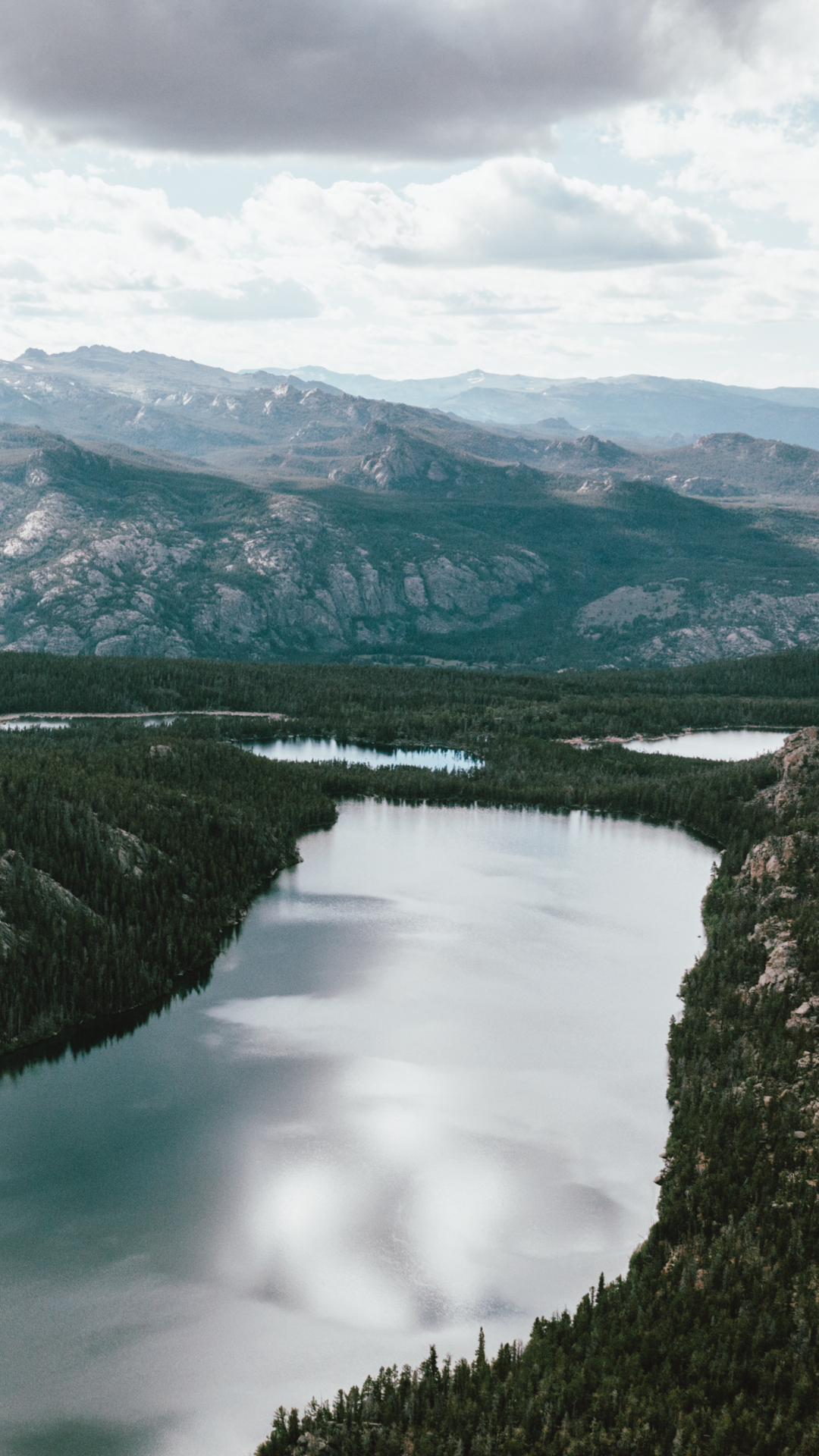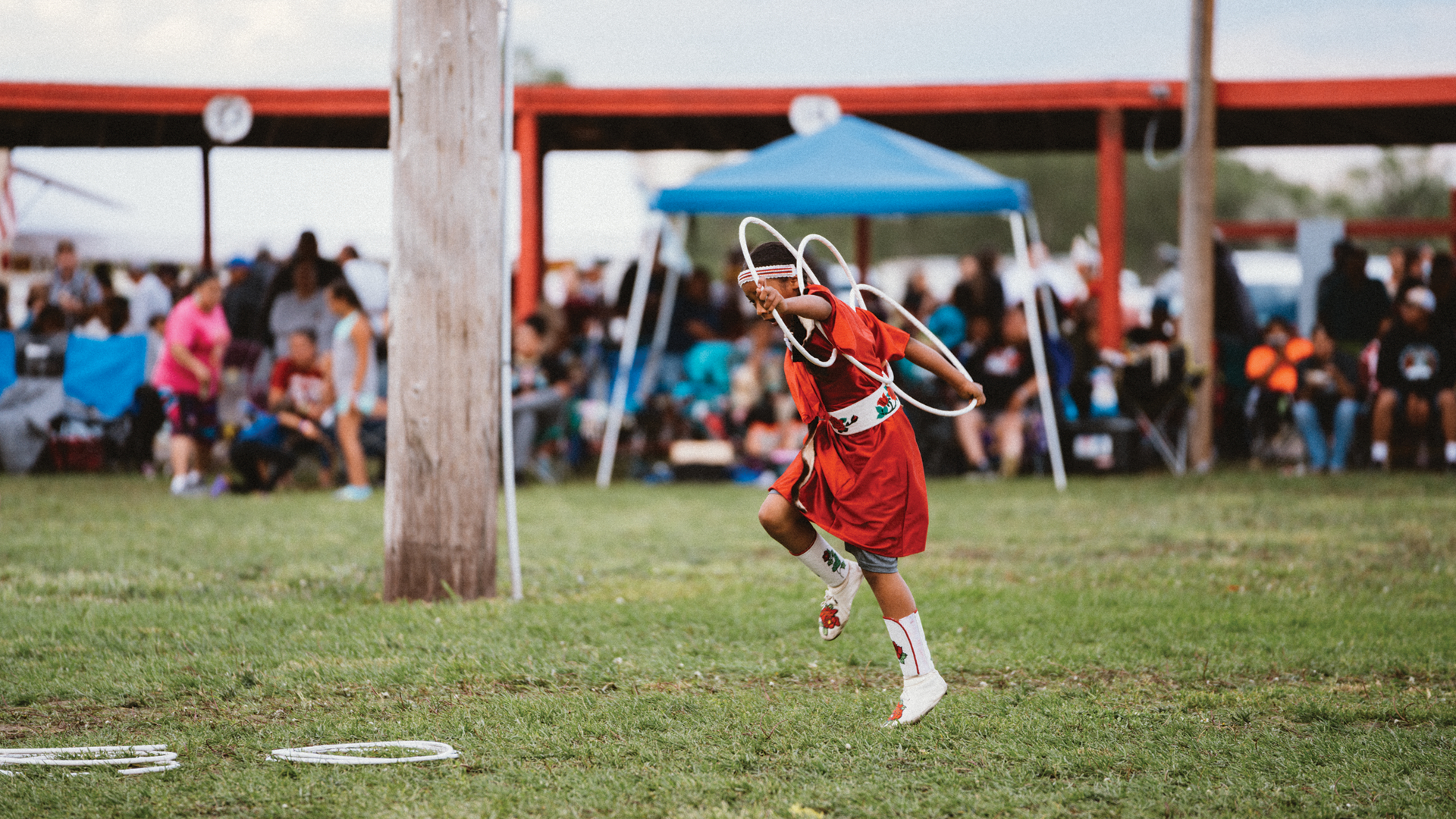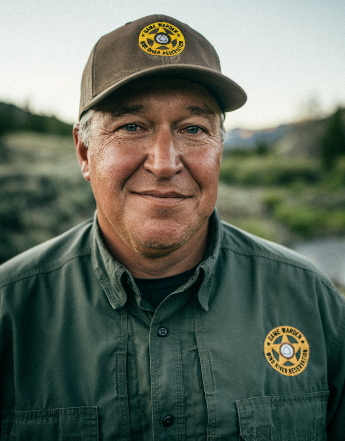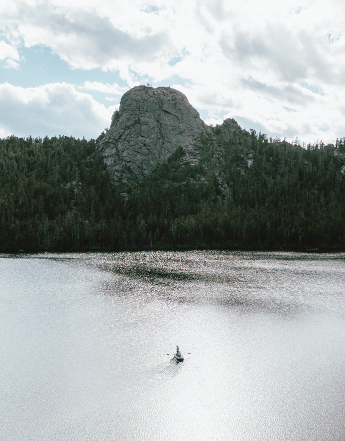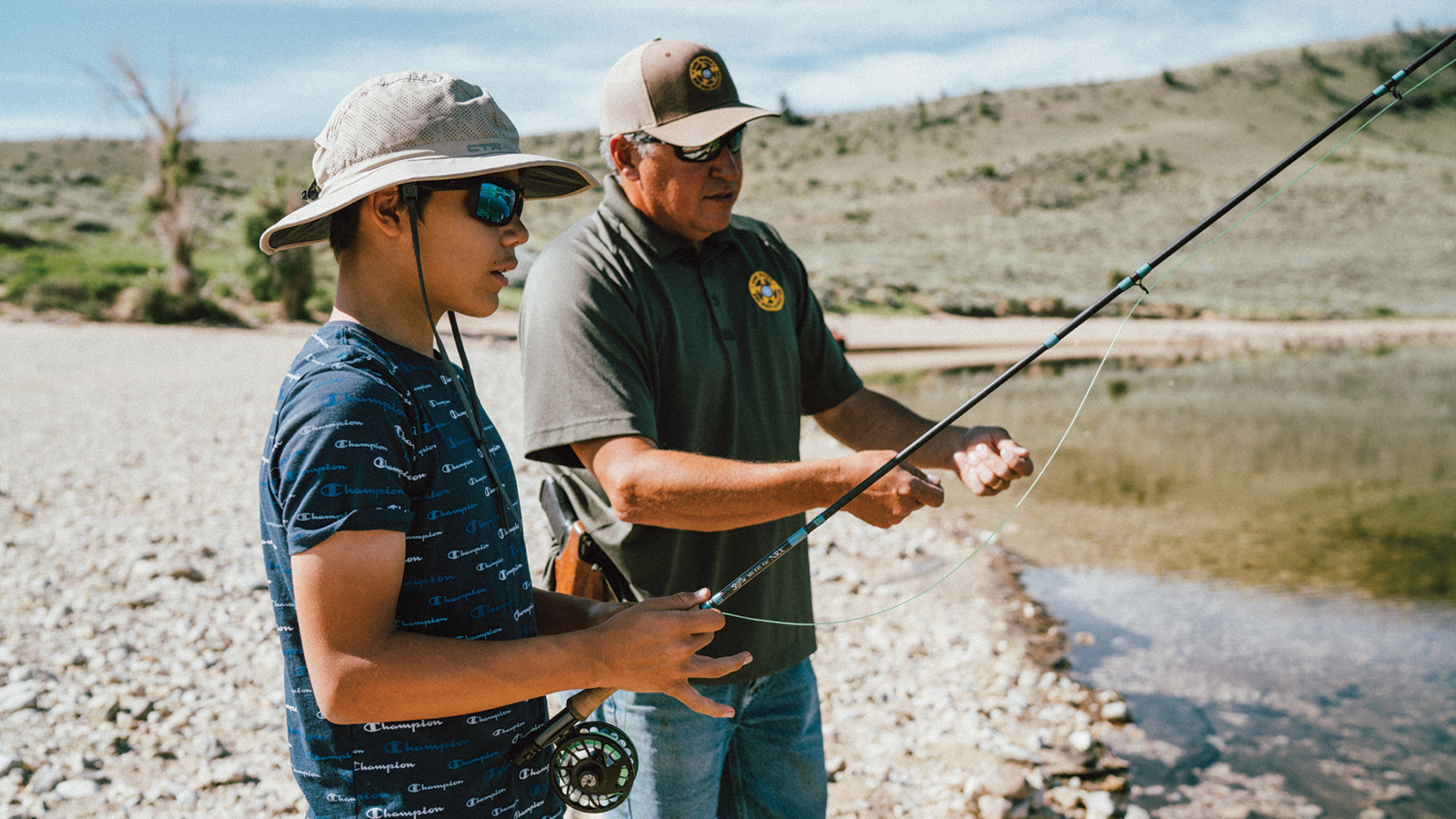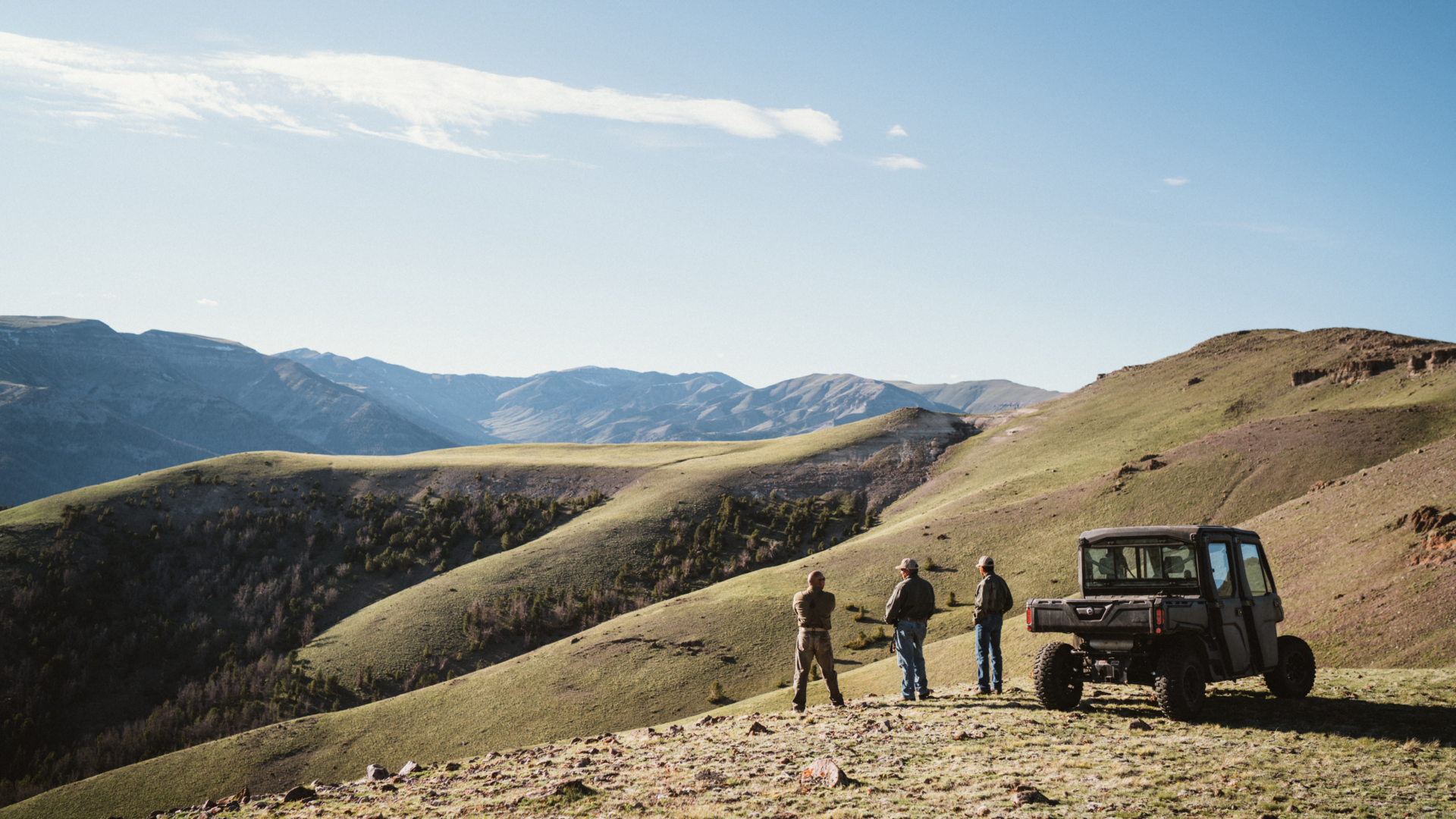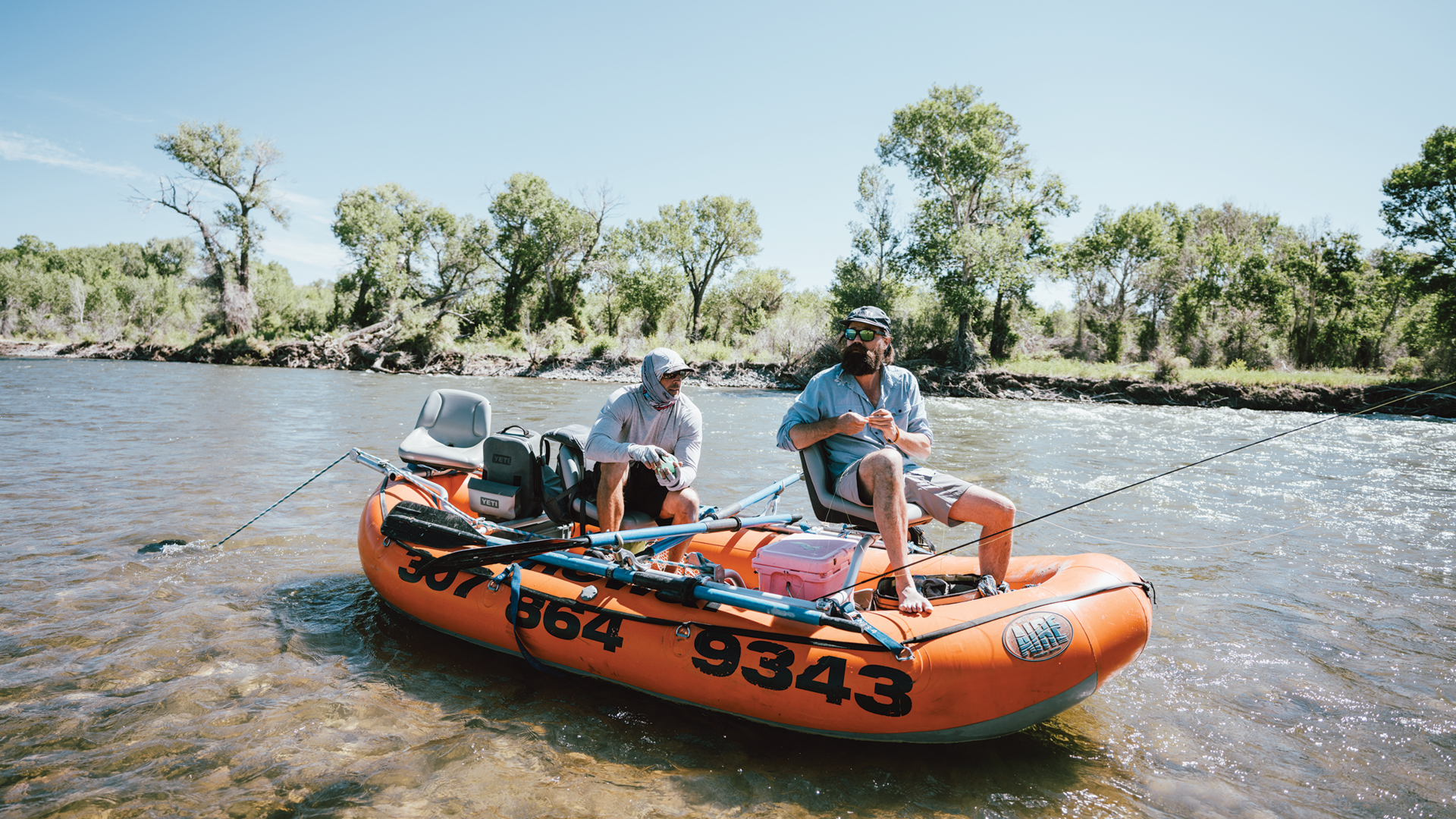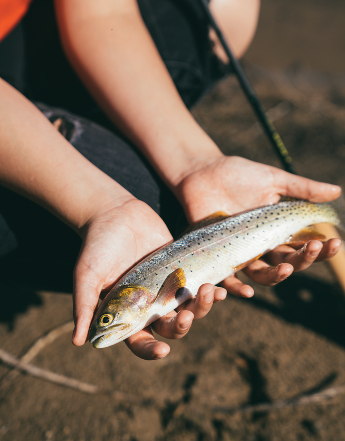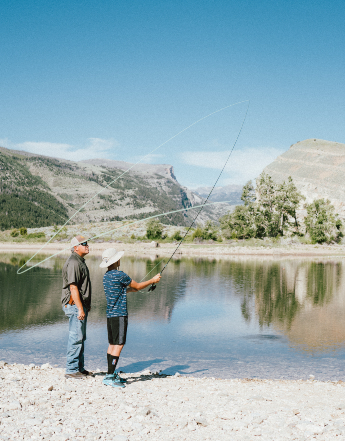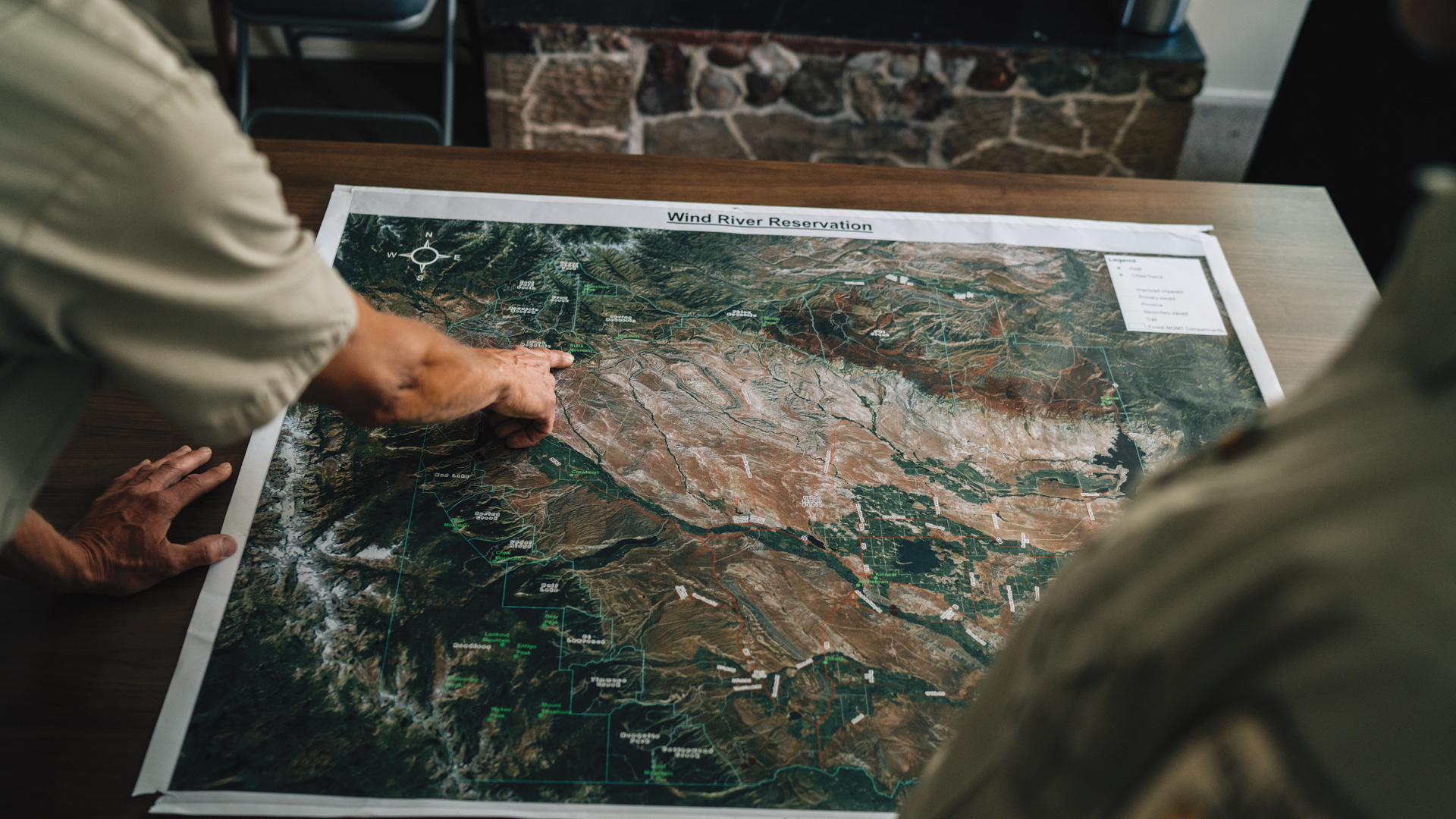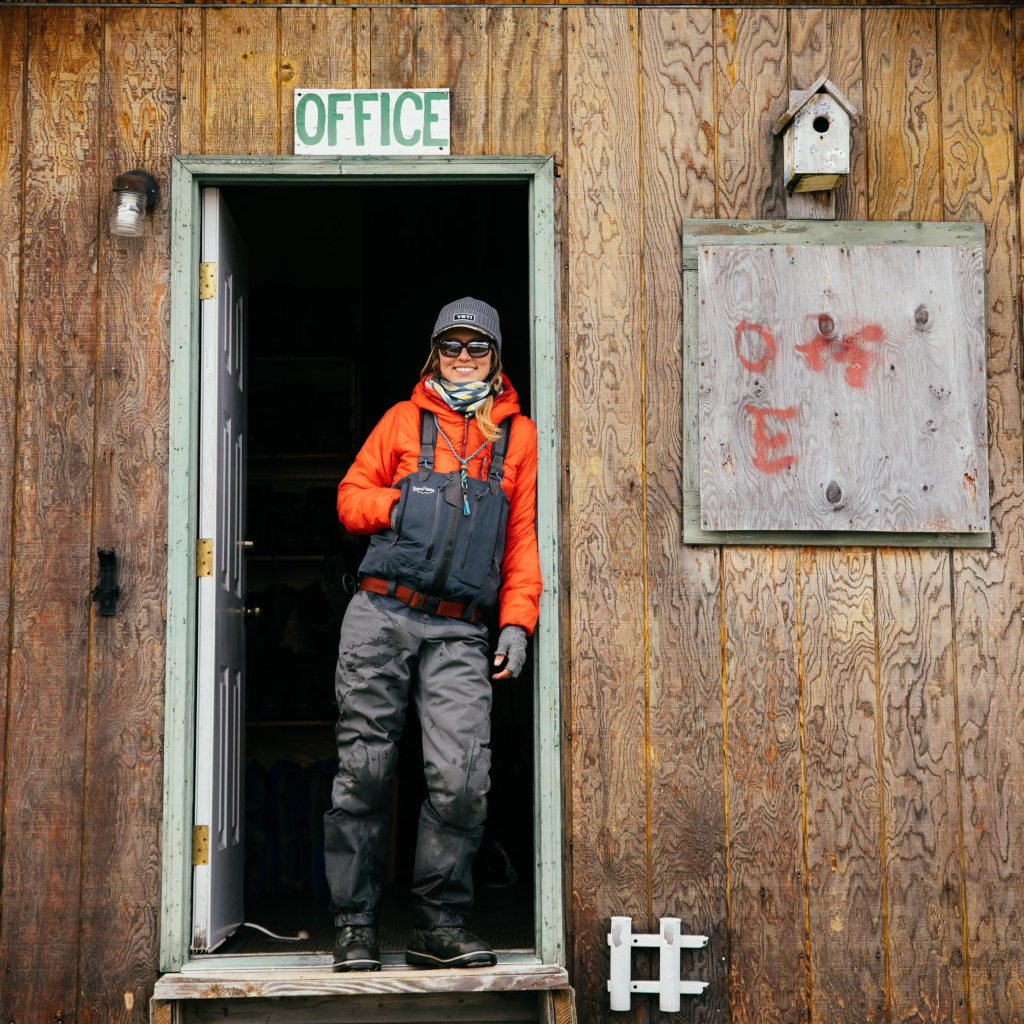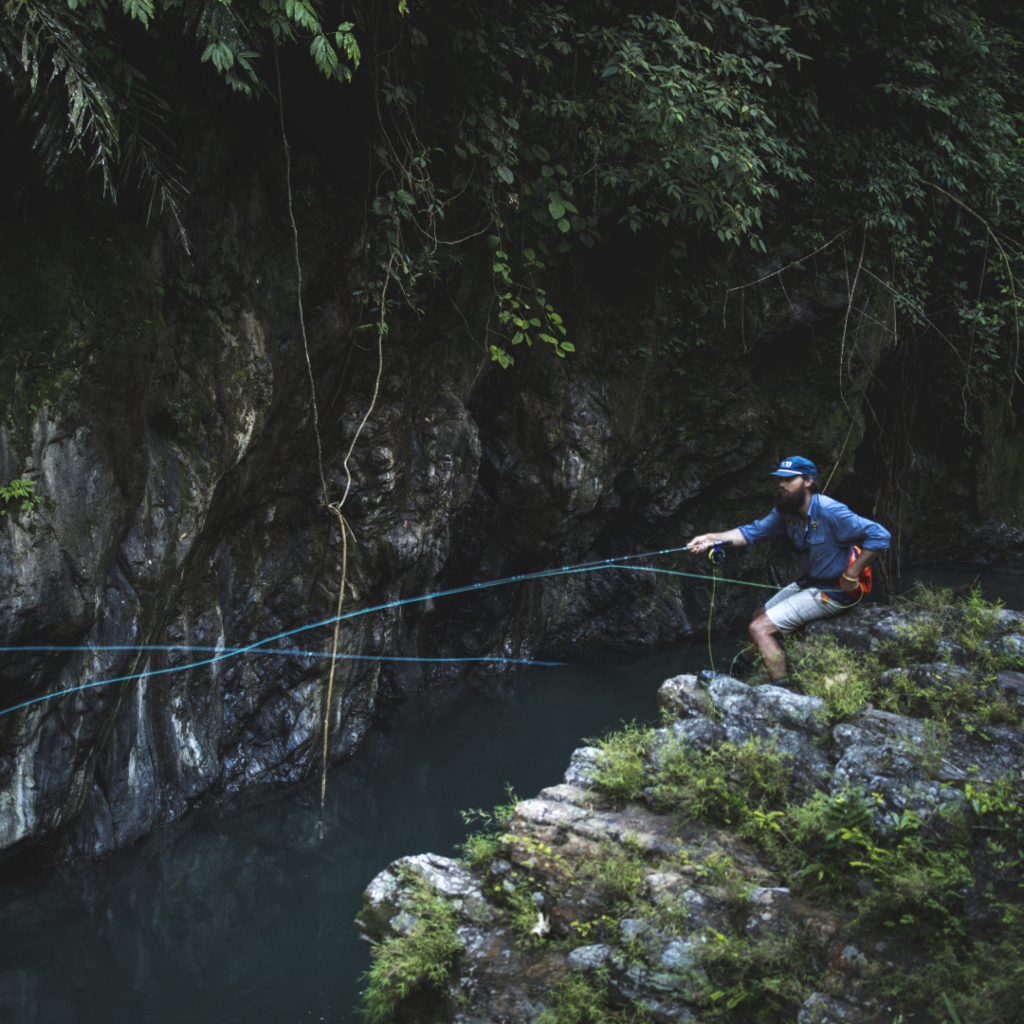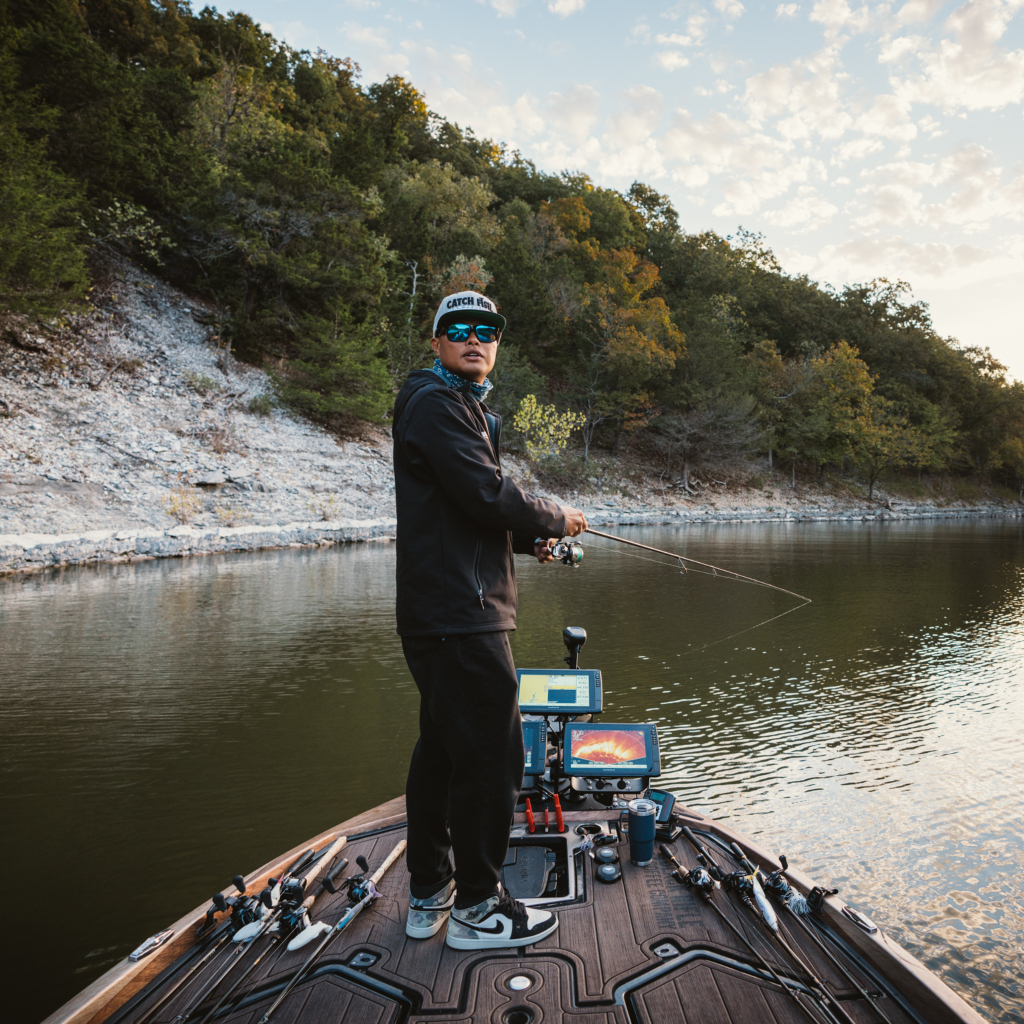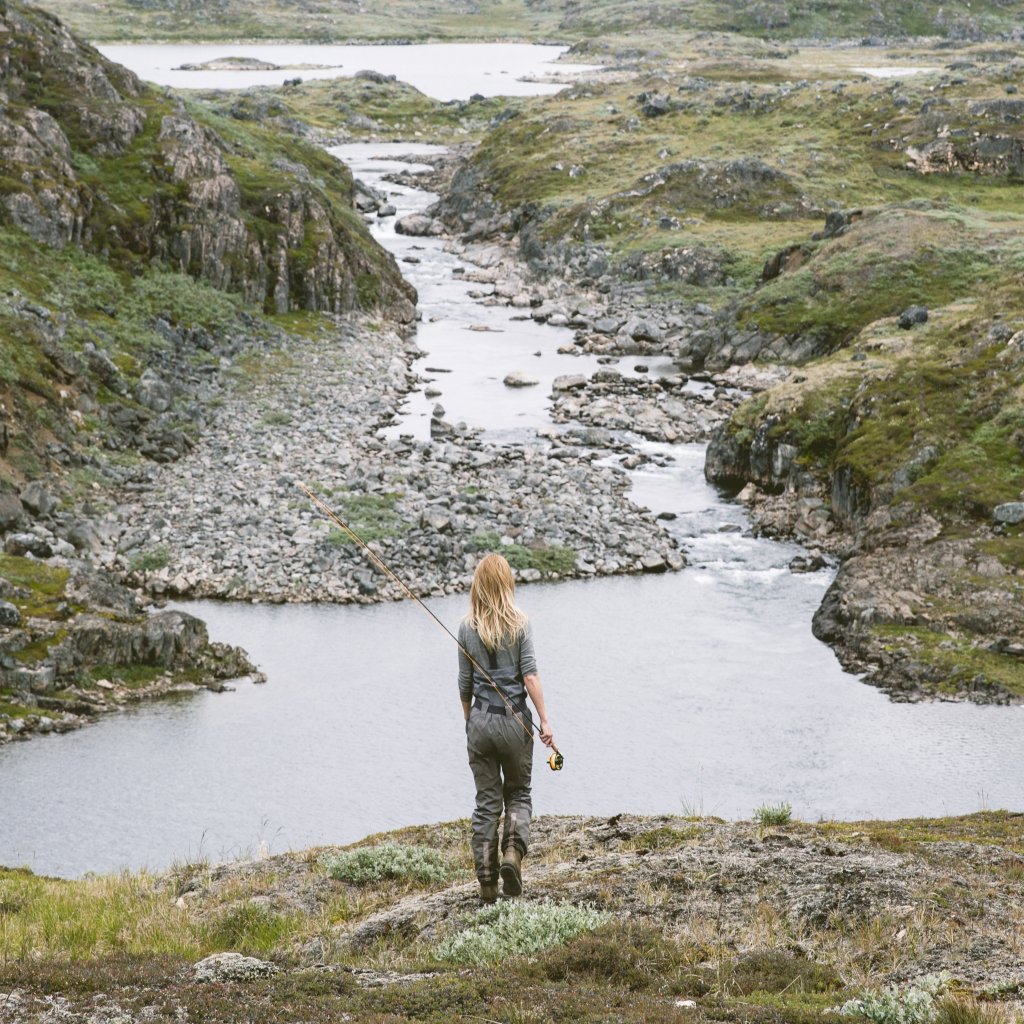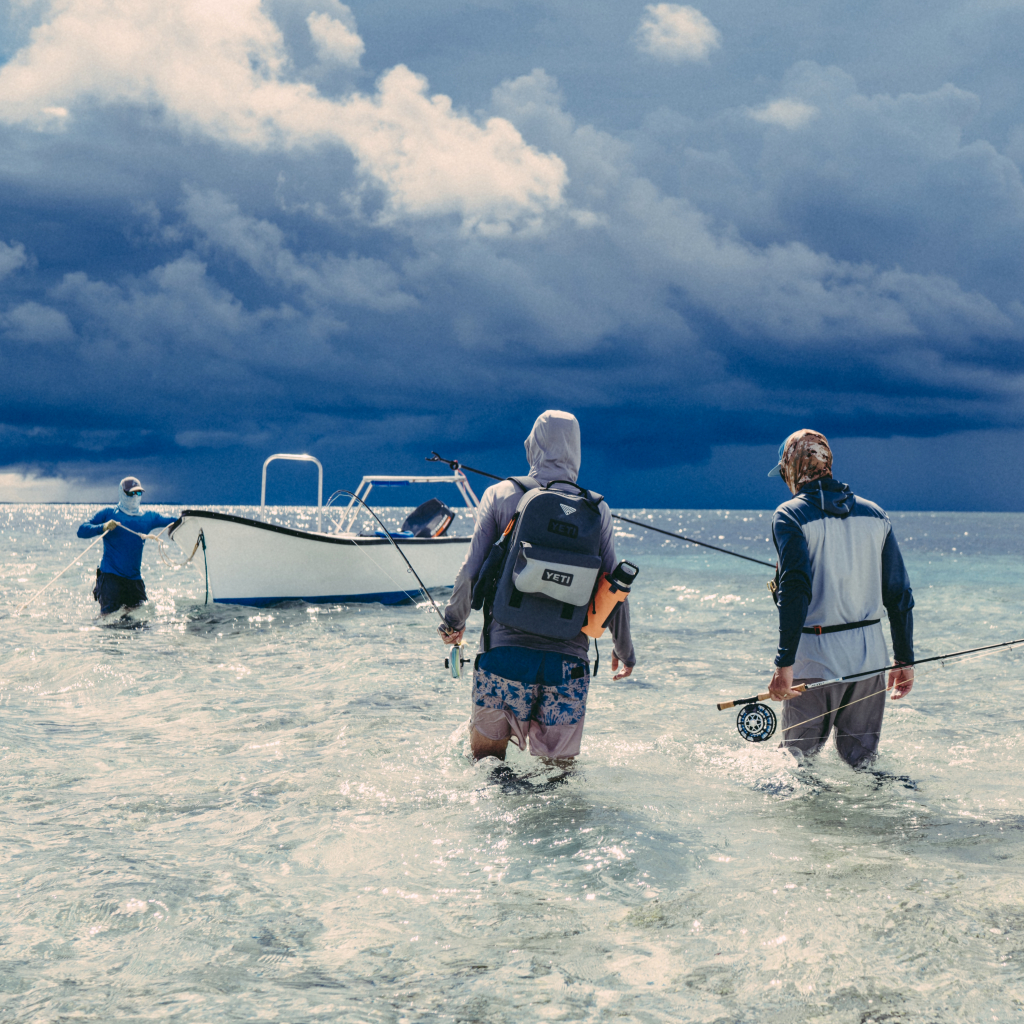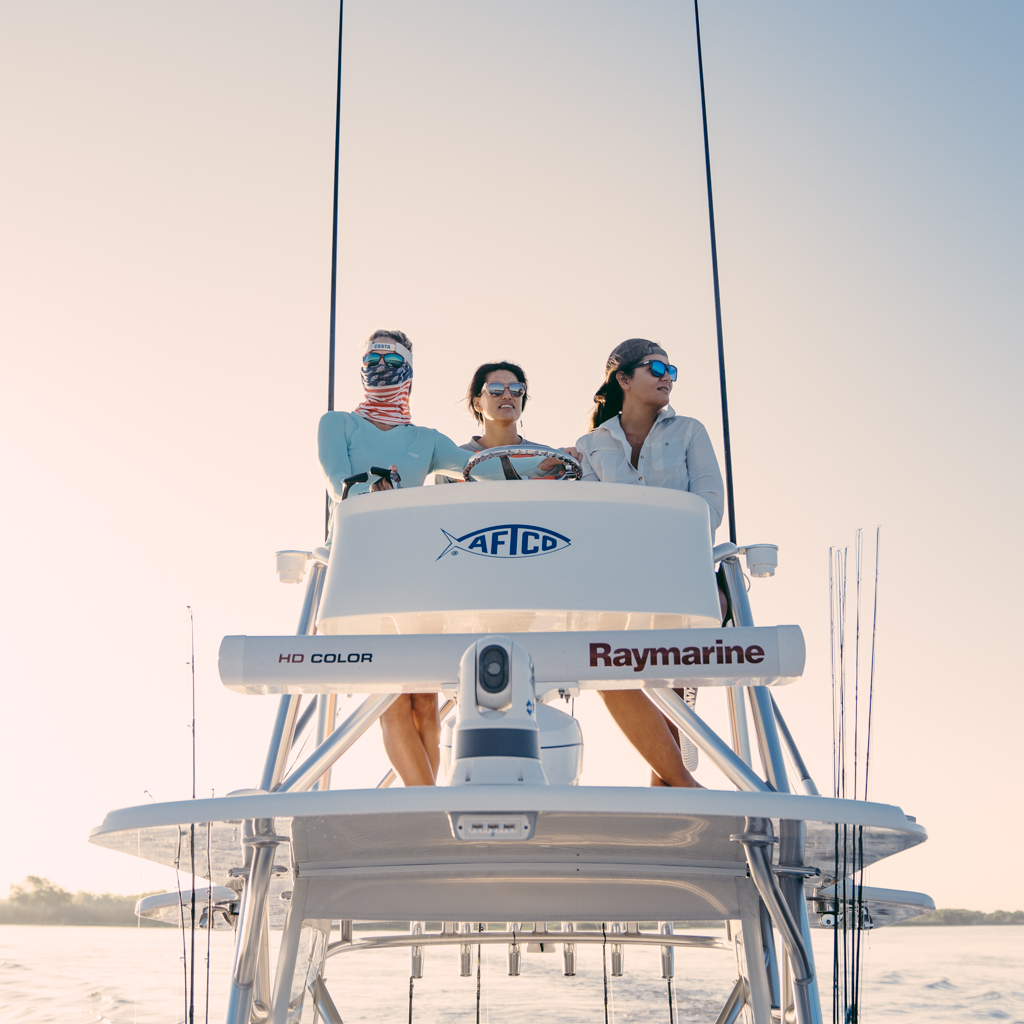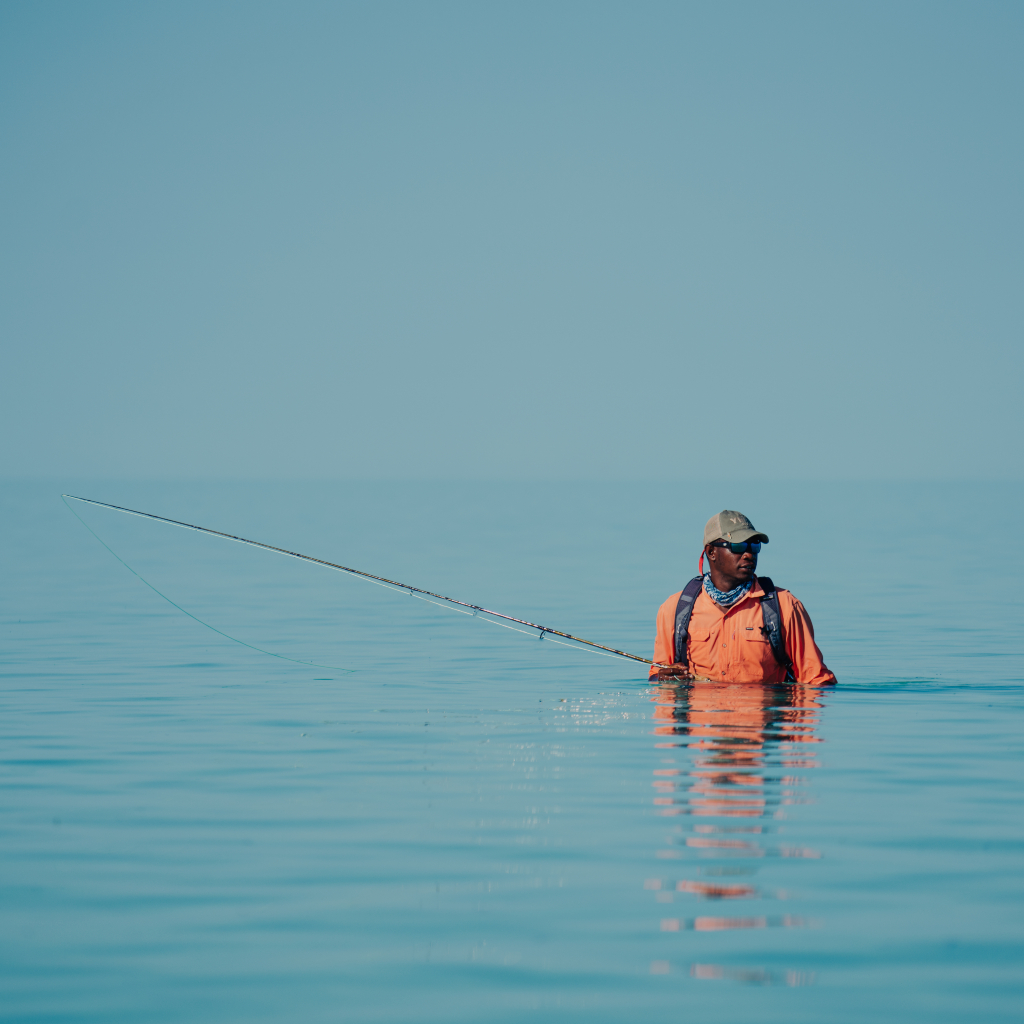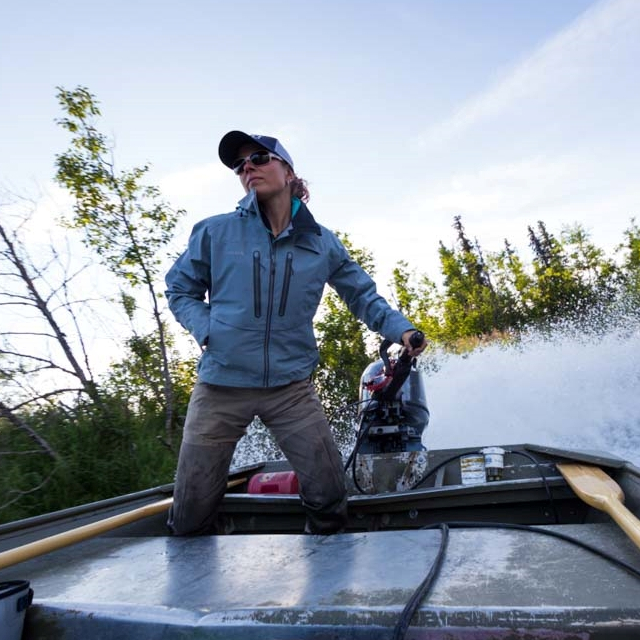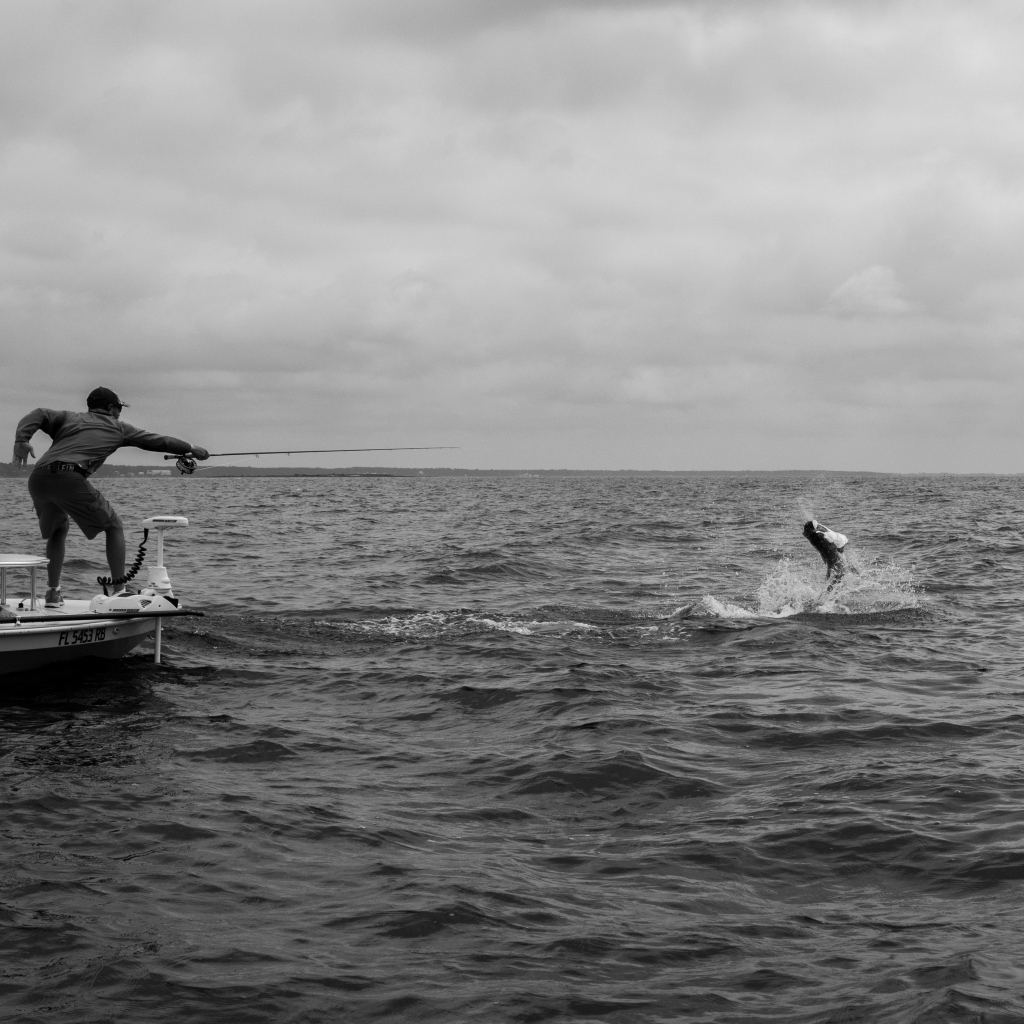We often think of rock as unchanging. But looking up at the canyon wall across the water, the exposed layers in the cross section of earth remind us that a persistent river carves through, changes the landscape, and gives life to people and animals. The river is a beautiful representation of the project underway here on the Wind River Reservation. The question being, can fly fishing tourism on the reservation’s pristine rivers be a positive agent for generational change?
“The water’s looking real fishy over there,” Art calls over to me, pointing to a nice riffle on the water. Art Lawson is the Eastern Shoshone and Northern Arapaho Tribes Director of Tribal Fish and Game here on Wind River Reservation in Wyoming. He’s a busy man who is often needed in many places at once, but today he’s fishing with us, proudly showing off the place he works to protect. I make my way over, rod in hand, eager to see what he’s after; the fishing here is world class.
We’re at the river’s edge, waiting at the takeout point for a few rafts on a quiet bend of the Big Wind. Actually, everywhere is pretty quiet here – we’re in peak summer and there’s no one around. No other anglers on the water, no tourists traipsing along, no cars passing by. No one. It’s hard to believe, especially as we’re spitting distance from Yellowstone National Park, which hosted over one million visitors by July of this year. But out here, you’re more likely to see pronghorn or wild horses than you are another tourist.
Talking with Art, I’m trying to understand how, with such a precious resource – truly one of the last untouched places in the lower 48 – bringing more people to the reservation is the name of the game. “Well, of course we do want to keep the land natural and native the way it is,” Art says. “But we need a few things here. A big one is jobs. The unemployment rate is over 70% here on the reservation.” We talk at length about the delicate balance of protecting this place while creating more economic opportunity.
We spot the rafts coming down the river. On board are Oliver White, a fly fishing guide with experience around the world, and Matt Shilling, a tenured humanitarian and conservationist – both passionate anglers here with Indifly. They spent the day on the water with Darren Calhoun. He owns Wind River White Water and Fly Fishing, a 100% Native American owned guiding company. Because Darren is an enrolled member of the Northern Arapaho Tribe, and holds an outfitter permit on the reservation, he can offer unique access to his clients to protected areas on the Wind River Indian Reservation where non-natives would otherwise not be permitted.
With his father, Darren has operated trips in Wind River Canyon for 30 years. He possesses a wealth of knowledge regarding resources on the reservation. Darren also sees the economics issues first-hand: Visitors come to fish on the reservation but spend all their money elsewhere. The only revenue captured is from fishing licenses; the rest is largely spent at fly shops, lodging, sandwich shops, and restaurants that are privately owned or are off the reservation. This kind of situation is called “leakage” in the business world, and it’s how the Indifly concept comes into play from an economics standpoint.
Indifly is a nonprofit organization whose work centers on empowering Indigenous communities to conserve and protect their natural resources by helping develop sustainable local economies through fly fishing tourism and lodges. One of the things that makes Indifly unique is the ownership structure of the lodges they establish. Indifly doesn't take an operating stake in the business. Instead, they lend their expertise, provide capital, advise, and help train along the way. Their model succeeds by empowering the community members to become entrepreneurs.
Matt Shilling first came to Wind River on behalf of Indifly about six years ago, spending time meeting people and developing relationships before ever talking about doing a program. “Art and I will take long drives and not only talk about what the future of the reservation looks like and what steps we must take strategically to get there, but we also talk about our families, and we talk about our future personal goals. It's a relationship that I've come to really value and cherish,” Matt says, careful not to speak for Art. But I can see in their camaraderie that this work is personal for them both. Together they’ll be that committed, constant force that has the power to change a landscape.
The Wind River Reservation encompasses 2.2 million acres, including a full complement of fish and wildlife in the Northern Rockies. The reason for that abundance is the diverse array of habitats, with everything from grizzly bears and wolves, to sauger, cutthroat and golden trout, and loads of big game. There’s a low human population and not a lot of development, so from 4,000 feet in elevation up to the Continental Divide at over 12,000 feet, the land is protected and very much in its natural state.
“I don't think the tribal youth are aware of what we have here,” says Art. A lot of them don't have transportation or the ability to get up into the mountains to enjoy it.” The reservation is vast – a kid on a bike won’t get very far, and they’re likely to bust a tire pretty quickly, as once you’re off the main paved highway, it gets rugged fast. But getting the tribal youth out into the land, fishing, hunting, camping, and just experiencing it, can ignite that spark for conservation in them. So, figuring out a solution for reliable transportation has become a project priority.
“What I tell them is, ‘You're a tribal member – you live on this reservation. You're probably going to grow up and stay on this reservation. And what you have in your backyard is worth keeping and protecting and is really important,’” Art says of working with the schools and other programs. As someone who spends his life outdoors, he knows that when people get out into their wild places they naturally become stewards of protecting and preserving them. Making the reservation more accessible for the tribal youth and sparking interest in protecting it has become an important layer of the investment that Art is building with Indifly.
We’re all loading up in the side-by-sides to check out a place high up in the mountain backcountry. With Art as our guide, it takes us nearly an hour to slowly make our way up the mountain along the switchbacks. The trails are so rocky and rugged that there would be no accessing this territory without a vehicle built specifically for it. There are no signs or mile markers. Once you’re off the one paved highway on this side of the reservation, you’ve got to know where you’re going. But Art knows it like the back of his hand because he is one of four individuals who patrol the 2.2 million acres.
Also on Art’s charge is livestock and agriculture law enforcement – as well as search and rescue. “Oh yeah,” he says without taking his eyes off the road. “I’ve got some crazy stories.” It seems he’s happy to have the company in the truck cab because with almost no prompting, the indeed crazy stories start flowing. For the next hour or so as we jostle up the mountain, Art shares anecdotes from his time patrolling. Some are amusing, like the guy who accidentally shot himself in the abdomen but survived. Others are infuriating, like the poachers they catch who gloat about their kill on social media. Plenty of other stories are heartbreaking and devastating.
The monumental task of patrolling 2.2 million acres practically alone and providing search and rescue support to the entirety of the reservation is mind boggling. But Art’s attitude is very matter of fact. He does what he can the best he can, and he invests his time and energy in an effort to ensure that the issues of today are not handed down to the next generation.
The landscape changes from arid, desert canyon down by the Big Wind River, through what looks like a lunar landscape where we pass a single cow on the side of the road, to a lush mountain valley with green grass and wildflowers. On one ridgeline we can just make out the Tetons some 80 miles in the distance to the west; on the other side of us is a deep valley with countless sparkling creek inlays.
We continue to one of Art’s favorite spots deep in the mountains and find a creek bursting with brook trout. Oliver, Matt, Art, and I are taking in the last of the daylight up here, getting a bite on almost every fly we throw. This place is truly special. It’s hard to comprehend that there is no one else around. But as I’ve learned, more people everywhere isn’t the goal. They’re targeting conservation-minded anglers who seek to share an experience and support the mission.
The next day we have the opportunity to speak with Leslie Shakespeare. He’s a former vice-chair of the Shoshone Business Council and current superintendent for the Bureau of Indian Affairs Wind River Agency. “The B.I.A., which is the Bureau of Indian Affairs, is a U.S. federal agency within the Department of Interior,” Leslie explains. He oversees all the land and resources on the reservation and is who Art turns to for funding.
I wanted to understand how Leslie and Art came to agree to work with Indifly on this endeavor. “Well, we are always skeptical about everything,” says Leslie. He is thoughtful in his choice of words and has a serene and steady demeanor. “A lot of entities come to us who want to exploit the tribes and want to use our resources or data for their own benefit. The latest one I’ve seen come through the councils was on carbon capture. They wanted all the tribe's data to be able to offset their own carbon footprint.”
Not only is such a proposition simply a disrespectful scheme, but it’s an offense to the tribal heritage of land stewardship. The instances of egregious exploitation that the Eastern Shoshone and Northern Arapaho people (two historical enemy tribes, both forced to live on what’s now the Wind River reservation), as well as all Native American people, have experienced are longstanding, multifold, and not limited to the past. The Intertribal Council does not rush or readily agree to new propositions from outsiders.
Art chimes in, “The thing about most of these propositions we get is that nobody here benefits from anything. But that’s what is different about Indifly. Their model doesn’t work unless the community benefits.”
But even when Matt and Indifly became trusted partners, the idea of a community-owned and employed fly fishing lodge wasn’t an immediate sell in the community. After all, you're talking about explaining that people would want to come to their homeland, catch a fish in the most inefficient way possible, pay a lot of money to do it, and take a picture, and put the fish back in the water. It's just a hard concept to wrap your mind around if you're not used to fly fishing. “I've been fishing the reservation my whole life,” says Art. “And then we teamed up with Indifly, and they got us into fly fishing. Now my wife and daughters are fly fishing with me,” he says with a laugh.
“Fly anglers spend a lot more money than almost any other sporting activity,” Matt points out. “So, we have this opportunity to create an economic upside that's pretty high while keeping the pressure on the resource fairly low.”
When wild places are used to build an economy, to become a source of employment and a destination, a pressure balance then comes into play: How much human impact can the land, fishery, game population, etc. withstand before it’s no longer in balance?
Well, it’s actually rather scientific. Indifly brings in teams of biologists at the initial phase of the project to understand how much carrying capacity the resource can take, if this is a viable concept for the ecosystem, what the impact would be on the roads and infrastructure, etc.
“If we do it right,” says Matt, “the better the resource, the better the destination, the better the business.” He continues, adding, “We’ve got to strike this balance of job creation on the reservation and still keep Wind River pristine, all while preserving the culture here – which will set it apart as a destination.” Working with the resources and the people is letting the river flow naturally against the rock and creating lasting change over time.
“I've never met someone more passionate about making his homeland a better place for the future,” Matt says of Art. “Since we don’t have a one-size-fits-all approach at Indifly, and every community is different, we quickly switched from the model of, ‘Let's build a lodge pretty quickly and staff it with enrolled tribal members,’ to, ‘Let's spark a passion for conservation and outdoors in the youth and help create good conservationists.’ And ultimately, the success of this endeavor lies in the tribal youth understanding the impact this has in the future, in their futures.”
Of course, there’s no silver bullet solution; the challenges are intertwined, multi-generational, governmental, financial, and emotional. “Things are always hopeful,” says Art. “We just want to say we’re here, respect what we have, and…” after a brief pause, Art smiles and adds, “and come spend your money on the rez.”
Indifly's mission is to bring attention to some of the world's most pristine yet at-risk fisheries and leverage the passion of the fly angler and power free enterprise to transform these areas into sustainable, world-class fishing destinations.
